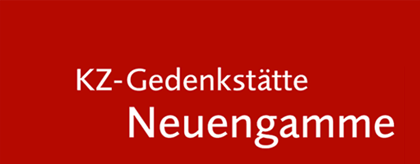10/17/2014 Seasonal Newsletter, Annual Report
Seasonal newsletter to the survivors of the Neuengamme concentration camp, their families and members of the Friends of the Memorial Association
On behalf of all staff members here at the Memorial, I would like to thank you for your support and wish you Happy Holidays and a successful, peaceful New Year.
Ladies and Gentlemen, dear Friends,
A few days ago, we had the pleasure of welcoming the 100,000th visitor to the Neuengamme Memorial in 2014. This is the first time that we were able to attract sixdigit visitor numbers in one year, and it shows that public interest in our activities is continuously rising. Over recent years, visitor numbers have increased by over 10 per cent annually. This development is mainly due to the site’s redevelopment and the reopening of the Memorial in May 2005, when the State of Hamburg closed the prisons it had previously operated on the site, and put almost the entire historical grounds of the camp at the Memorial’s disposal.
Also in 2005, the new exhibitions and the Centre for Historical Studies were inaugurated at the Neuengamme site. Ten years after this important event in the Memorial’s history, we will be celebrating the 70th anniversary of the camp’s liberation and the 50th anniversary of the inauguration of the International Monument this coming May. We will mark this occasion with a larger-than-usual event that will include international commemorative celebrations flanked by special exhibitions and conferences. Just last week, we sent out invitations to the remaining survivors of Neuengamme and its satellite camps – sadly fewer than 500 people today. Although they are now of a very advanced age, we are hoping to see many of them during the event at the Memorial and at the multigenerational workshop we are planning. Our calendar of events to mark the 70th anniversary of the camp’s liberation will start as early as 15 January with the opening of the exhibition “Deported to Neuengamme concentration camp. Wehrmacht and SS penal campaigns in occupied Europe” at Hamburg City Hall. This exhibition deals with the fates of inhabitants of different towns and cities in Europe, namely Meensel-Kiezegem in Belgium, Murat in France, Putten in the Netherlands, and Warsaw in Poland, whom German troops deported to Neuengamme and its satellite camps as reprisals against the local pop-ulation. Most of them did not survive their deportation, as in the case of the people from Putten: Out of the 588 men who were deported to Neuengamme, only 48 returned home after the war.
We are hoping this exhibition will garner a similarly good response as the one we showed at City Hall last January and February. It was entitled “’Euthanasia’. The Nazi mass murder of the disabled and mentally ill in Hamburg”, and its extensive programme of accompanying events as well as its catalogue met with great interest from the public. Three more special exhibitions were to follow over the course of the year: the show “Last Witnesses. Memories of Prisoners in Fascist Camps”, initiated by Prof. Jan Philipp Reemtsma (25 June-29 August), our collaboration with the Friends of the Memorial Association in presenting another exhibition at City Hall entitled “I never thought I’d Come Here Again” on the fates of former slave labourers and the programme to bring them to Hamburg (21 August-15 September) and – only just opened – the show “David Rousset. A Life of Struggle for Freedom and Human Rights” (on display since 10 December).
Apart from our regular work of guiding more than 2,000 groups of visitors around the Memorial, most of them from local schools, we also organised more than 200 seminars, projects, workshops and events at the Centre for Historical Studies this year. The number of research queries concern-ing individual biographies our archive received from all over Europe and the world also remained high, at around 3,000. For the exact figures, please refer to our Annual Report, which is available in printed form or can be downloaded as a pdf file from our website at www.kz-gedenkstaette-neuengamme.de. For information on our current activities, I also recommend looking at our profile on Facebook, where we regularly post updates in both German and English (www.facebook.com/Neuengamme.Memorial).
In our everyday work maintaining the grounds and the buildings, the end of the “Arbeit und Leb-en” job creation scheme was making itself felt very much this last year. However, on 4 May, we were able to complete the construction of our new reception building (or service point) and were busy with the on-going renovation of the roof of the former hammer mill.
2014 saw a number of publications from the Memorial appear in print: the short guide to the Pop-penbüttel Memorial subtitled “The persecution of women in Hamburg under the Nazis and the commemoration of the victims”, a new edition of our course handbook “A Perpetrator, Nazi, By-stander or Victim in My Family? Materials on biographical family research”, the 700-page, two volume catalogue accompanying the exhibitions and entitled “Neuengamme Concentration Camp: History – Post-War-History – Memory” and volumes 4 and 5 in our series “Neuengamme Semi-nars”: “Teaching Historical Memories from an Intercultural Perspective. Concepts and Methods” and “Neuengamme within the Concentration Camp System. Studies on History and Reception”. With the last book, I wanted to take stock of the research on the Neuengamme camp and its histo-ry after 25 years as the Memorial’s director, look back on the development of the Memorial, and point out some of the current issues within the politics of history.
In mid-August, Stephan Taschke took over from Wolfgang Stiller as the Memorial’s new Head of Administration, and Dr Oliver von Wrochem, who runs the Centre for Historical Studies, will also serve as Deputy Director from this year on.
On behalf of all staff members here at the Memorial, I would like to thank you for your support and wish you Happy Holidays and a successful, peaceful New Year.
Sincerely,
Dr. Detlef Garbe
